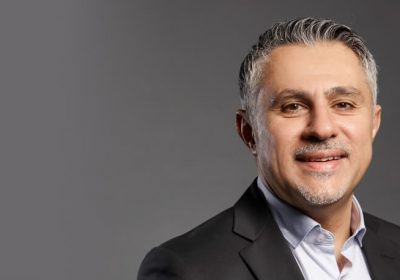
- Author: Alexandra Cain
- Posted: June 22, 2021
Pro Medicus: Ramping up Deals During COVID
It is fair to say healthcare imaging firm Pro Medicus has had a good pandemic. While the business had to shift gears early on, it was still able to win seven major deals over the past 12 months.
The ASX 200 firm’s software sits behind radiology practices. It does everything from billing and scheduling to interfacing with Medicare – everything radiologists use in their practice and has been enhanced by the acquisition of Visage, which include moving into clinical reporting diagnostic tools.
Pro Medicus Chief Financial Officer Clayton Hatch joined Pro Medicus in 2008, as a finance manager, before later moving into the CFO role after completing his CPA.
“My role today is very different to the role I played back in 2008. We were already listed on ASX, but we were a team of only 25. Today, we’re a global business. I’m still involved in the hands-on monthly and yearly reporting. But my role is more about investor relations and strategy.”
The finance function is run from the Melbourne HQ, but the business has extensive operations through the US and Europe. So a substantial part of Hatch’s time is spent running the US finance function.
“When I started, we were Australian-based only, but we also serviced parts of New Zealand and Canada,” he explains.
“We were a $100 million dollar company when I started and I thought it would be great if we could grow the business to be a $300 million company. Our market capitalisation is currently sitting at about $5 billion.“
A game changer happened during the depths of the global financial crisis in 2009 when Pro Medicus acquired Visage Imaging, which was part of a NASDAQ-listed company called Mercury Computer Systems, which wanted to get out of life sciences to focus on software for the defence industry. This was Pro Medicus’ entrée into the US market. It also gave it access to a talented R&D team in Berlin focused on making radiologists’ work easier and achieving better patient outcomes.
“They had a similar philosophy to the Australian business – that the product is only as good as your next release and you’ve got to continually keep coming out with updated new versions. A similar mindset made it easy to work together. When we acquired Visage, the US team sold the product as an add-on. So we had to go back and develop the product into what it is today, which replaces the radiologist reporting desktop.”
It was a different story in the US and the business was pretty much re-built from the ground up in the States. In fact, Hatch concedes a major issue is finding the right mix of people in the business. In particular, he says it can be challenging finding people who want to work in healthcare in Berlin, which is a tech hub in Europe.
“We slowly scaled up the organisation in the US, brought on a new general manager with decades of experience in the industry and he built up the team. We now have fewer, more multi-skilled employees. So rather than employing 30 people at a time, even when we have large implementations, we hire fewer people who can do more. Even today, when we have won seven major deals over the last nine months, we’re only hiring a few people at a time.”
Navigating through the pandemic
COVID’s impact on Pro Medicus was thankfully short-lived. There was a drop off in examinations in radiology around the world in March and April 2020, as hospitals worked out how to re-group to accommodate COVID patients. But things have returned to normal from there.
“We were able to transition to work from home in Australia, Berlin and San Diego and travel to clients’ premises for implementations after lockdowns ended. We were able to keep everyone employed,” Hatch explains.
The business was even able to successfully achieve a major implementation in August last year. “That was a huge achievement. We worked out a hybrid model combining working on site and working remotely in terms of training radiologists to use the software,” he adds.
Hatch says COVID has actually been a tailwind for Pro Medicus.
“It proved how different our technology is to some of our competitors, who were not so easily able to transition to a work-from-home environment. We were able to support our customers to seamlessly work from home and have the same experience they would get within a hospital. COVID aside, in the future, a lot of the major hospitals around the world will put processes or plans in place to support staff to work from home.”
Lifelong learning
Hatch is currently part way through the Monash University Global Executive MBA course.
“It was something I’ve wanted to do for a number of years and is helping develop my operational, strategic marketing and leadership skills. We have a small executive team, many of whom have been in the industry for a long time. So I think we’ll really benefit from learning from leaders who are outside the industry who might have slightly different views.”
As for the future, the business is looking to expand its presence in the cardiology and other medical fields such as ophthalmology. The team is also adding functionality such as the ability to store and catalogue photos, videos and other imagery on its technology platform.
“Our utopia is being able to support diagnostic imaging for every single image within a hospital setting and for other disciplines as well,” Hatch explains.
Artificial intelligence is a big part of the business’s future, and it has an AI accelerator program that also involves large academic clients like Yale, Mayo and NYU. Participants will be able to use the accelerator program to develop their own algorithms and help third party algorithm companies to connect to Pro Medicus’s technology.
Hatch marvels at the transformation journey the business has been on over the 13 years he has been with it.
“We were a $100 million dollar company when I started and I thought it would be great if we could grow the business to be a $300 million company. Our market capitalisation is currently sitting at about $5 billion. We’ve gone further and moved quicker than we expected. The future is incredibly exciting.”








